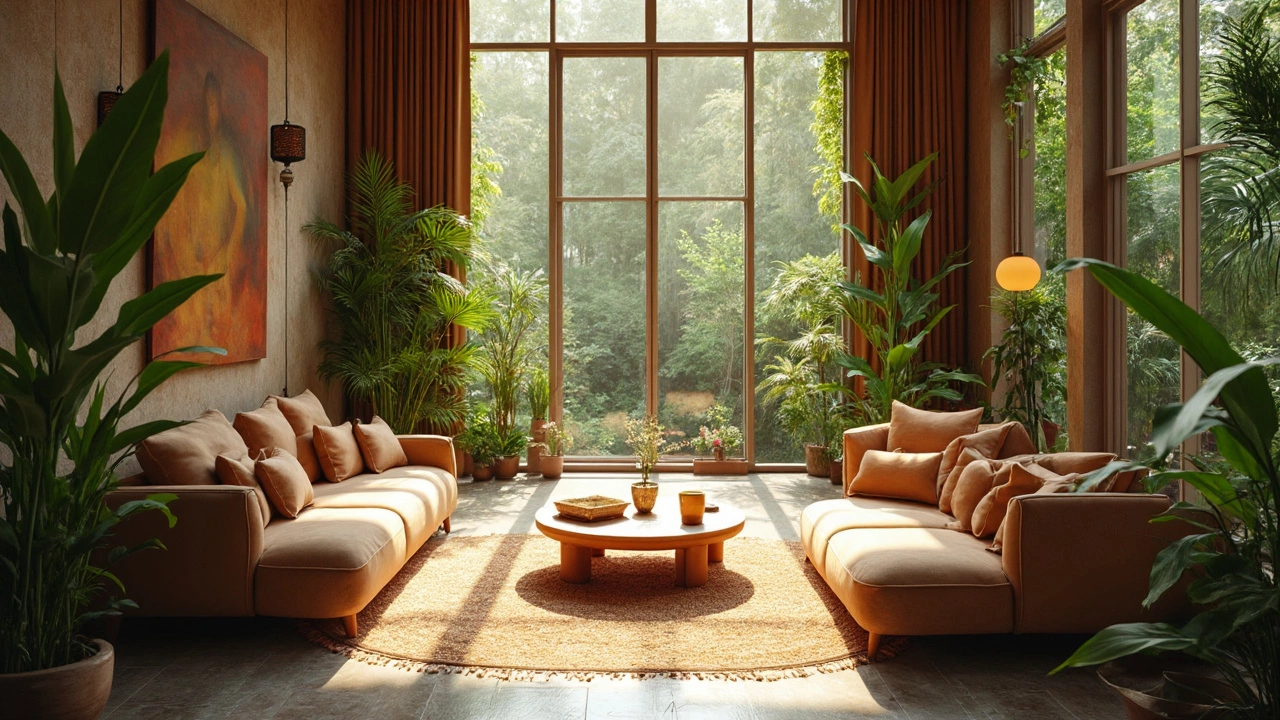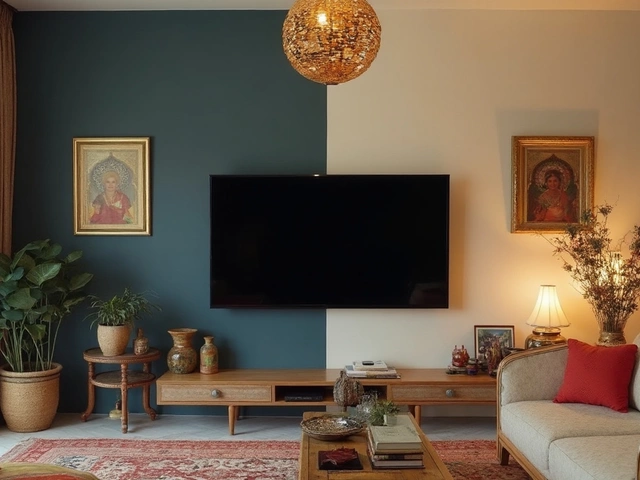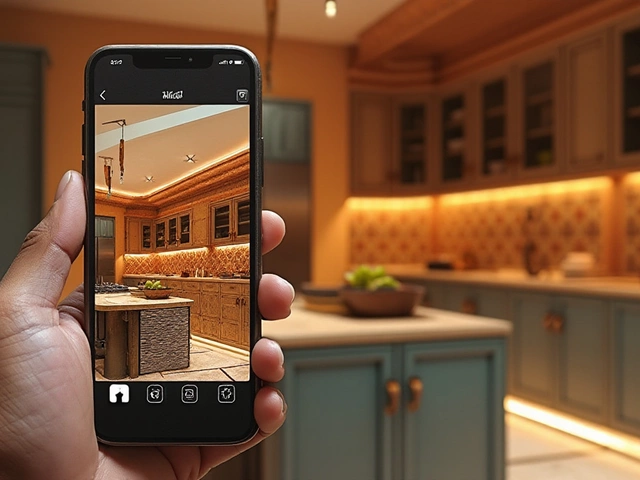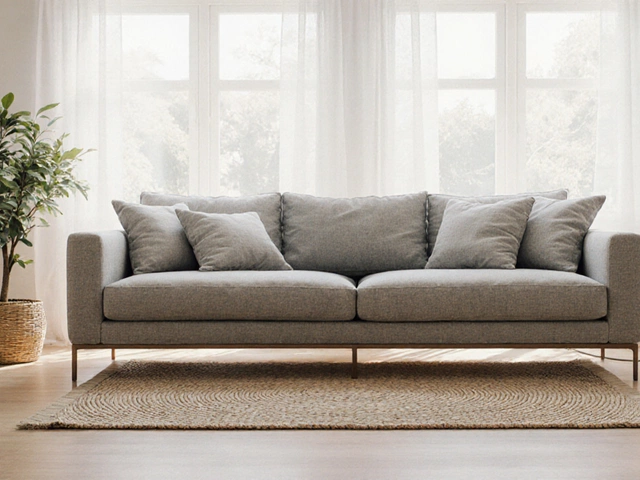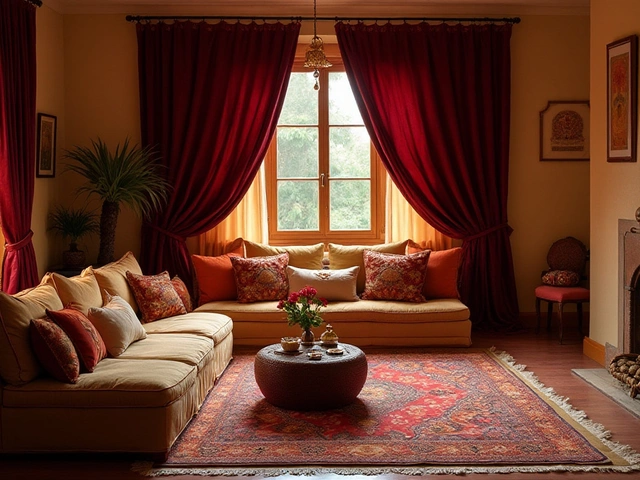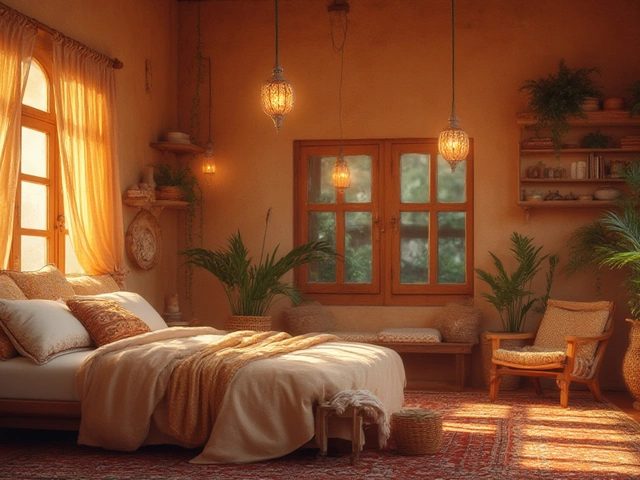So, what's the big deal with modern home interiors these days? Well, it's not just about how things look but also how they function and feel. These days, people want their homes to be cozy, efficient, and kind to the environment. The mix isn't just random—it's something that's thought out and connected to how we all live and work now.
Ever thought about why multifunctional spaces are all the rage? Think about it: one day you're working from home; the next, you need a place for your yoga or the kids' toys. Spaces today need to keep up with our ever-changing lifestyles. That's why furniture and layout that transform easily are the heroes of modern interiors.
- Understanding Modern Interior Design
- The Rise of Multifunctional Spaces
- Sustainable Choices for Home Decor
- Biophilic Design and Natural Elements
- Incorporating Personal Touches
Understanding Modern Interior Design
Modern interior design is all about creating spaces that are not just visually stunning but also practical and functional. Unlike old-school interiors, which were often all about looking fancy, the modern design puts functionality and comfort at the forefront.
One key element of modern home interiors is the focus on clean lines and uncluttered spaces. Minimalism often takes center stage, but not in a way that makes spaces feel cold or uninviting. Instead, it's about choosing key pieces that have impact, both visually and in terms of utility.
Emphasis on Open-Plan Living
Open-plan living has become a hallmark of modern interiors. This design trend nixes the traditional boundaries of separate rooms, creating one fluid space where living, dining, and sometimes even cooking happen in harmony. The idea here is not just about making a space look bigger but also fostering social interaction within the home.
The Role of Technology
Tech plays a big role in interior design trends. From smart lighting systems to voice-activated assistants, technology is seamlessly integrated to make life easier while maintaining the serene aesthetics of the space. Those who are truly tech-savvy opt for hidden devices and sleek panels to maintain the minimalist vibe.
Playing with Natural Light
Natural light is another critical component. Large windows, skylights, and glass doors help bring the outdoors inside, emitting a warm and inviting glow. This focus on natural lighting enhances the sense of space and elevates the overall mood of a home.
Home decor style today isn't just about looks; it's about creating a backdrop to our everyday lives. It's about spaces that reflect who we are while adapting to how we live. Whether you're a fan of clean lines or tech-enabled homes, modern interior design has something for everyone, seamlessly blending form and function.
The Rise of Multifunctional Spaces
Gone are the days when a room had just one purpose. In today's world of modern home interiors, flexibility is key. But what sparked this shift? It's largely our changing lifestyles—working from home, needing space for leisure and hobbies, and the necessity to make the most of what we have. Plus, not everyone has a mansion, right?
One of the coolest trends is the use of furniture that serves multiple purposes. Imagine a dining table that works as a desk, or a sofa that converts into a bed. People love this because it saves space, and who doesn't want a room that can change with their needs? It's like having a Swiss Army knife, but for your house.
More Than Just a Trend
So, why is this important now? Well, with real estate prices soaring, especially in urban areas, many folks are downsizing or opting for smaller living spaces. Being smart with space is becoming crucial, and modern interior design is all about being adaptable and savvy. It's about making your home work for you, not the other way around.
Another big factor is sustainability. People want to own less and choose quality pieces that last. Investing in multifunctional furniture means buying fewer pieces, which cuts down on waste. Plus, less clutter makes for a peaceful environment—always a plus in our busy lives.
Putting It Into Practice
- Look for stackable chairs and tables that expand, which are perfect for hosting guests and then neatly tucking away.
- Consider a bed with built-in storage to declutter your bedroom without losing style points.
- Use modular shelving systems that you can move around depending on how you want your space to look and function.
Ultimately, the rise of multifunctional spaces shows how we're living more consciously. It’s not just about fitting everything in but about creating a space that truly serves and adapts to your lifestyle.
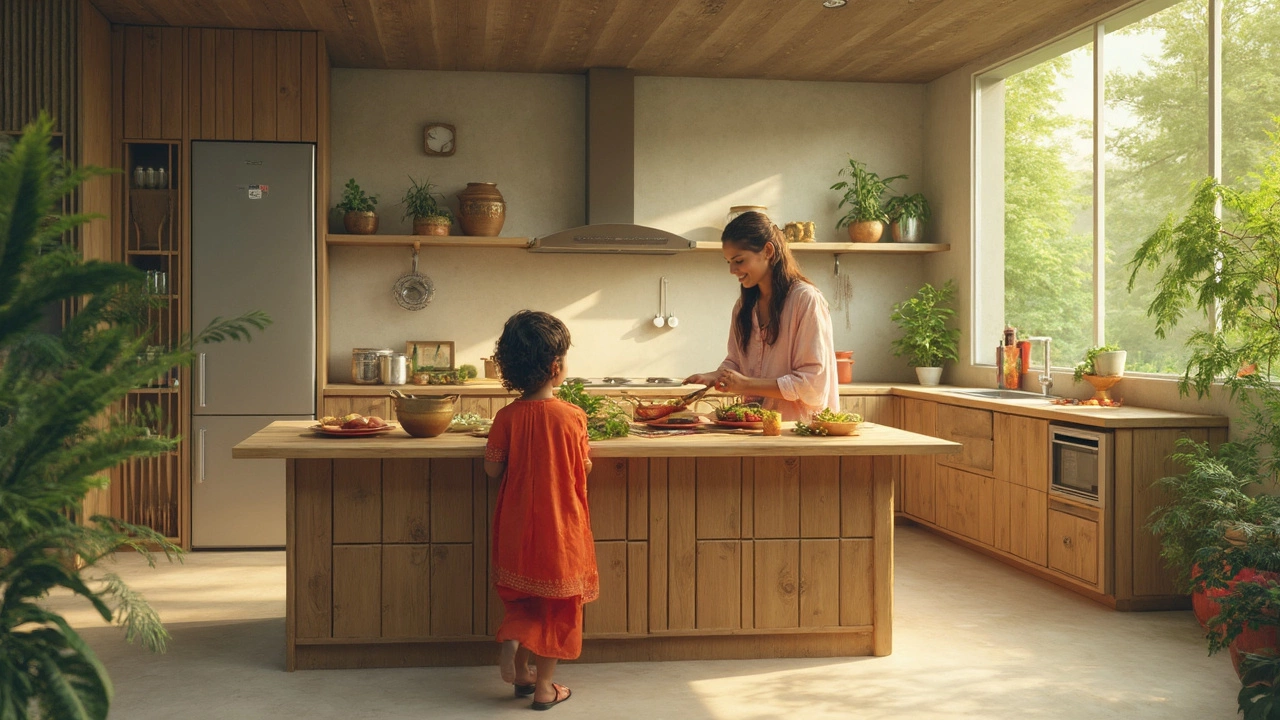
Sustainable Choices for Home Decor
Making your home look good is one thing, but doing it in a way that’s good for the planet adds a whole new layer. Opting for sustainable choices in your home decor is a smart move, and it's becoming a vital part of modern home interiors.
Sustainable Materials
The first step is picking materials that are renewable and have a lower impact on the earth. Think about using bamboo, reclaimed wood, or recycled metal. These materials not only look fantastic but are better for the environment since they're less resource-intensive.
Eco-Friendly Furniture
When buying furniture, look for items that are made from sustainably sourced wood or recycled materials. Furniture companies like IKEA now offer ranges that focus on sustainability. You'd be surprised how many pieces are both chic and eco-friendly.
Energy Efficiency
Here's a simple tip: swap out traditional bulbs for LED ones. They're about 80% more efficient, which means they use a lot less energy. Not only does this reduce your electricity bill, but it's a smart eco-friendly choice. Plus, remember to turn off lights when you leave a room—the little things make a big difference.
Decor with Purpose
Decorate with plants! They naturally clean the air, add a burst of color, and create a relaxing vibe. Snake plants and pothos are low-maintenance and great for improving indoor air quality. It's like decorating and purifying your home all at once.
Water Conservation
Don't ignore water use. Install aerators on taps and showerheads to reduce flow without sacrificing pressure. For those big landscaping projects, consider drought-resistant plants that need less watering.
Smart Tips and Stats
| Statistic | Impact |
|---|---|
| LED Bulbs | Reduce energy use by about 80% |
| Water Aerators | Save nearly 50% of water consumption |
| Recycled Materials | Decrease landfill waste by 60% |
So, the next time you're thinking of refreshing your home, consider these sustainable choices. They’re affordable, help the environment, and will make your home a place you can truly feel good about. That's what modern living is all about.
Biophilic Design and Natural Elements
Ever heard of biophilic design? It's all about bringing nature into our homes to create a balance between the indoors and the outdoors. Imagine having spaces that not only look like nature but feel like it too. It's cool how this approach taps into our deep connection with nature.
Natural light and fresh air play big roles in biophilic design. More homes are being designed with larger windows or skylights, making sure rooms are bathed in daylight. Fresh air is also encouraged by having good ventilation, sometimes even adding indoor plants to help purify the air naturally.
Benefits of Biophilic Design
- Boosts mood and reduces stress: Just looking at nature or natural elements can calm us down and make us a bit happier.
- Increases productivity: Some studies say people are more creative when they have natural elements around them.
- Improves air quality: Plants naturally reduce toxins in the air, kind of like nature's filtering system.
Still wondering how to bring these natural elements into your design? Think about materials like wood, stone, or clay. Use them in furniture, flooring, or walls for a natural feel. Don't forget indoor plants—choose ones that fit your light and care needs.
| Element | How to Use |
|---|---|
| Plants | Decorate shelves, use standing pots, or hang them for a green touch. |
| Wood | Choose wooden furniture or accents like frames and decor pieces. |
| Stone | Incorporate in countertops, flooring, or decorative pieces. |
So there you go! Using biophilic design and natural elements isn't just a trend—it's a thoughtful way to make our homes healthier and more harmonious with nature.
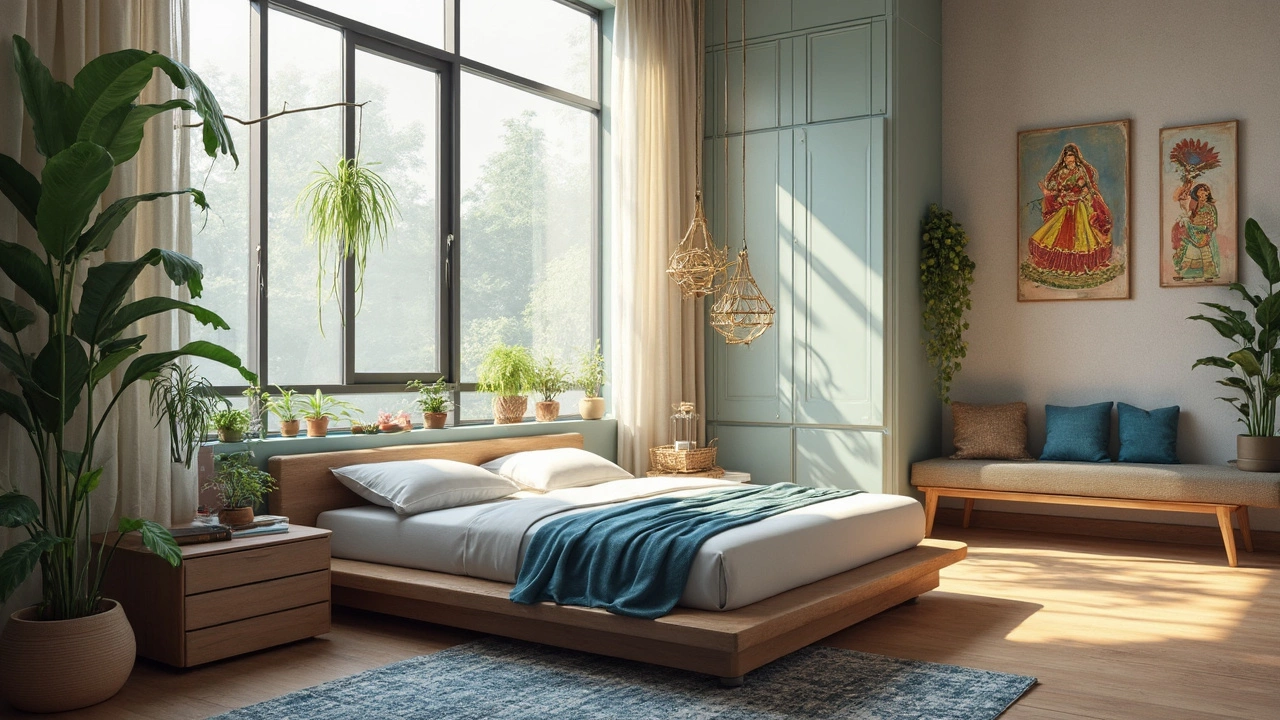
Incorporating Personal Touches
Adding personal touches to your modern home interiors isn't just about putting a few photos on the wall. It's about mixing who you are into every corner of your space. When done right, it carries your vibe throughout the house, creating a truly unique style.
Embracing Your Unique Style
Start by choosing elements that speak to you. Whether it's a vintage find from a local market or a quirky piece of art that caught your eye, integrate artifacts that hold meaning. The key is balance. Don't overcrowd; let each piece shine.
Mixing Old and New
Ever heard of blending old and new? This creates depth and interest. Try pairing a modern sofa with an antique coffee table. This mix brings character to the forefront. It keeps the vibe fresh and avoids a 'catalog' look.
Add Some DIY Flair
If you're the crafty type, infuse some DIY projects into your decor. It could be as simple as repurposing items you already own or painting a canvas. These bespoke additions can elevate your sense of ownership and add layers of personality.
Think Functional and Personal
Another way to personalize your home is through multifunctional pieces that reflect your lifestyle. Got a collection of travel books? Turn them into a functional side table with some clever stacking. This not only saves space but also tells guests a bit about your passions.
Involving All Senses
Don't forget the sensory side of things. Personal touches aren't just visual. The scents, sounds, and textures in your home add to the overall experience. Consider candles with your favorite scent or textiles that feel special against the skin. It's about creating an environment where every detail makes you feel at home.
